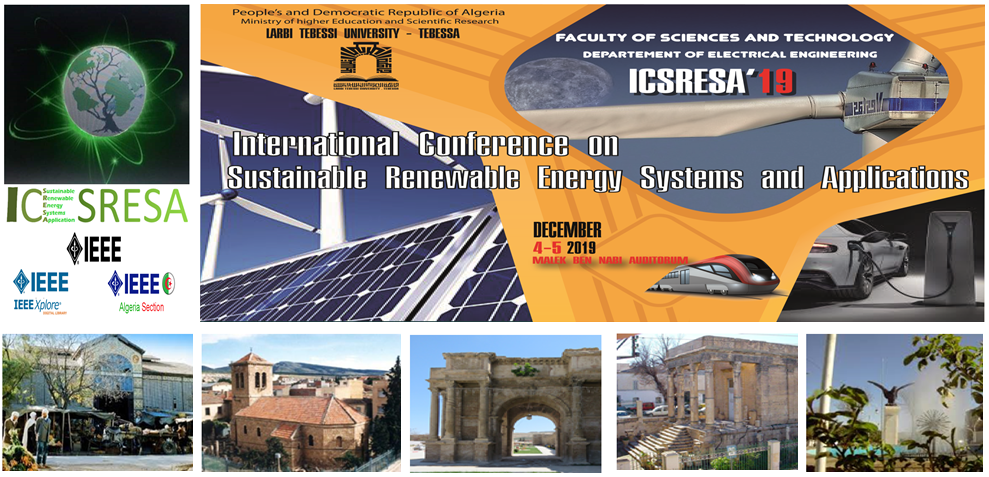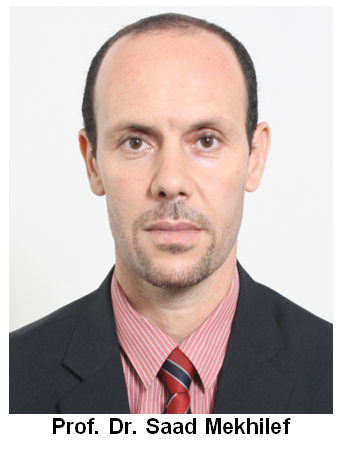
|
|
|
Plenary Session
New: Due to the inability of Pr. Saad Mekhilef to attend due to special circumstances that prevented him from attending the conference and giving a talk. Plenary Talk 1
The Role of Power Electronics in Providing a Sustainable Energy Supply
Abstract: Power electronics (PE) is an application-oriented and interdisciplinary area. It uses power semiconductor devices to perform switching action in order to achieve the desired conversion strategy. The PE plays thecrucial role of conversion and control of electrical power. The effective use of electrical energy is a key technique for achieving energy efficiency, and power electronics technologies that can convert electric power into the optimum characteristics for each application are anessential part of this approach. Power electronics systems have attracted attention as key components for building a sustainable energy supply.PE based power converters are also widely used in conventional and renewable energy systems. The advancement of semiconductor technology including the power devices and other components that support power electronics and control techniques have led to asmaller size, higher efficiency, and higher performance. In this lecture,i will describe some examples where power electronics and power devices are used in renewable energy and industrial applications and also highlight the role of PE in providing sustainable energy supply for future generation.
Biography: Prof. Dr. Saad Mekhilef is an IET Fellow and IEEE senior member. He is the associate editor of IEEE Transaction on Power Electronics and Journal of Power Electronics. He is a Professor at the Department of Electrical Engineering, University of Malaya since June 1999. He is currently the Dean of the faculty of Engineering and the Director of Power Electronics and Renewable Energy Research Laboratory-PEARL- He is the author and coauthor of more than 400 publications in international journals and proceedings (253 ISI journal papers) and five books with more than 17000 citations and 64 H-index, 116 Ph.D. and master students have graduated under his supervision. He has six patents. He frequently invited to give keynote lectures at international conferences. Prof. Saad listed by Thomson Reuters (Clarivate Analytics) as one of the Highly Cited (Hi Ci) engineering researcher in the world, and included in the Thomson Reuters’ The World’s Most Influential Scientific Minds: 2018, and 2019. He is actively involved in industrial consultancy for major corporations in the power electronics projects. His research interests include power conversion techniques, control of power converters, renewable energy, and energy efficiency. More Information about my research can be found at
Plenary Talk 2
Prof. Dr. Youcef Soufi Smart grid - The future intelligent energy supply Challenges, Technologies and Opportunities
Abstract: The traditional electrical power grid has served well for the last hundred years. Recently, however, it has been subjected to government deregulation and has suffered from several technical, economic, and environmental issues. Modern society demands this system to be more reliable, scalable, and manageable while also being cost effective, secure, and interoperable and the electric power system of the future needs to address all these needs and concerns by using advanced technologies to create a smarter, more efficient and sustainable grid. Thus, the development and implementation of a smart grid for power supply is one of the pressing issues in modern energy economy and it is promoted by many governments as a way of handling energy independence, global warming and security of supply. The smart grid delivers electricity from producers to consumers using two-way digital technology, and allows control of appliances in the consumers' houses and of machines in factories to save energy, while reducing costs and increasing reliability and transparency through automated control, high power converters, modern communications infrastructure, sensing and metering technologies, and modern energy management techniques based on the optimization of demand, energy and network availability. This presentation addresses critical issues on smart grid Challenges, development and Opportunities where the main objective of this presentation is to provide a contemporary look at the current state of the art in smart grid as well as to provide a better understanding of the technologies, potential advantages and research challenges of the smart grid and provoke interest among the research community to further explore this promising research area.
Biography Youcef Soufi received the B.Eng. (1991) and Doctorate degrees from the University of Annaba, Algeria in Electrical Engineering. Since 2000 he has been with the Department of Electrical Engineering, Laboratory of Electrical Engineering at the University Larbi Tebessi,Tebessa, Algeria .He is currently a Professor in electrical engineering. His main and current major research interests include Renewable energy, electrical machines control, power electronics and drives. He has published and co-authored more than 80 technical papers in scientific journals and conference proceedings since 2000. He is the member of editorial board of 5 journals, and the member of technical program committee / international advisory board / international steering committee of many international conferences. His email address is: y_soufi@yahoo.fr
Plenary Talk 3
Prof. Dr. Nabil Derbal
Robotic system controllers for kid’s rehabilitation
Abstract: The rehabilitation of neurological pathologies has progressed considerably in recent years. Indeed, studies have shown that the brain has a certain amount of plasticity. Hence, it is able, in part, to adapt and remodel when certain zones of the brain have been destroyed or damaged by diseases. Comparing to standard rehabilitation such as vojta, rood, Doman and Delcato, conductive education and Bobath therapies, new researches have proved the efficiency of robotic rehabilitation according to several advantages. This work deals with the problem of lower limb neuro-rehabilitation using robotic exoskeletons, especially, the rehabilitation of children affected by Cerebral Palsy. There are 3 types of cerebral palsy which are diplegia where both arms or legs are affected, hemiplegia where one side of the body is damaged and quadriplegia which affects all four limbs. Contrary to standard therapies, exoskeletons have the ability to interact with the human limbs and accurately at hip and knee joints. Moreover, there are three kinds of rehabilitation, passive, resistive and assistance as needed. Passive rehabilitation concerns kids who have totally lost the control of their limbs. Resistive rehabilitation is considered when kids can develop efforts and the exoskeleton’s movements are in the opposite direction. Finally, the assistance is needed when a voluntary part of required efforts is developed and the use of exoskeletons allows completing gait movements. In this work, we are interested in lower limbs rehabilitation especially for kids who have between 2 and 13 years old. For this purpose, several control laws have been implemented to leg joints (hip and knee) aiming to move lower limbs along a predefined gait cycle trajectory. First, we have implemented the adaptive feedback linearization with PID controllers, then, sliding mode control, high order sliding mode control and adaptive approaches. These control laws have been tested while tracking a gait cycle trajectory. |



